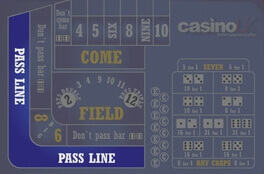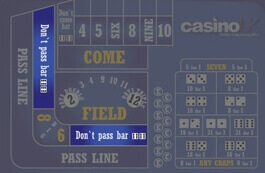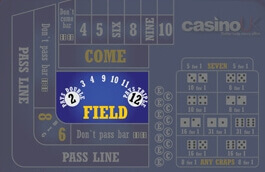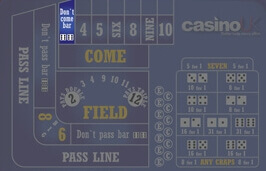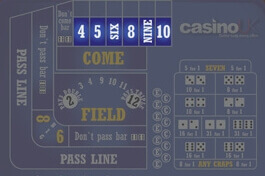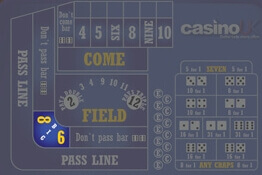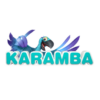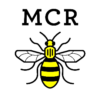There are a variety of fancy names that accompany where the dice lands in Craps but don’t let this weigh down on you. Neither should the various bets available that you can make. If you start your Online Craps journey, something I strongly advise, there will be less pressure to look like you know what you’re doing. Remember that online casino’s that are regulated also give you a fair chance at winning on the Craps table. There are various online craps rules people need to stick to, here is some terminology to ensure you stick to the rules:
The different types of Craps Rolls
The names of the rolls are as varied as they are bizarre. A strange superstition amongst Craps veterans is that it’s considered bad luck to say the word ‘seven’ at the Craps table. Which seems a bit impractical since seven is arguably the most pivotal number in the game!
Nonetheless, there are quite a few nicknames for the different rolls you can produce.
Check out the aliases of all the Craps numbers…
- 2 ALSO KNOWN AS Two aces, Snake Eyes, Eyeballs
- 3 ALSO KNOWN AS Ace-deuce, Three Craps Three
- 4 ALSO KNOWN AS Little Joe From Kokomo, often shortened to just Little Joe
- 5 ALSO KNOWN AS Fever Five, Little Phoebe
- 6 ALSO KNOWN AS Jimmy Hicks
- 7 ALSO KNOWN AS Six-one, Up Pops The Devil, Big Red
- 8 ALSO KNOWN AS Square Pair, Mom and Dad
- 9 ALSO KNOWN AS Nina From Pasadina, Jesse James
- 10 ALSO KNOWN AS Tennessee
- 11 ALSO KNOWN AS Yo, Yo-leven, Six-five-no-jive
- 12 ALSO KNOWN AS Boxcars, Midnight
Not only do the different numbers have their nicknames, but the combinations they appear in do too: when an even number comes up with both dice mirroring each other, it’s called a ‘hardways’ number. For example, there are plenty of easy ways to roll an eight: 2-6, 3-5 would be ‘easy eights’, whereas only 4-4 coming up would be a hardways eight. Because these combinations are rarer, hardways numbers have amongst the highest payouts on the table.
- Hardways 4 ALSO KNOWN AS The Ballerina Special (two-2s, get it?)
- Hardways 6
- Hardways 8 ALSO KNOWN AS Ozzy and Harriet
- Hardways 10 Sunflowers
How to Play Online Craps: Various Bets Explained
Craps Terminology: Line Bets
As we mentioned before, the shooter must have some money down on a line bet in order to throw. The Line bets are the Pass Line and the Don’t Pass Line.
Craps Terminology: The Pass Line
The Pass Line is the simplest bet in Craps, and really the only one you need to know to start playing. You’re betting that the shooter will win their roll. This bet pays even money, 1 to 1 , and has a lovely low house edge of only 1.41%.
How does the shooter win their roll? It can happen in one of two ways. The short way to win is to roll a 7 or 11 on their first roll,called the come-out roll. The quick way to lose is to roll 2, 3, or 12 on the come-out roll. If that happens, the shooter’s turn ends and the dice are passed on to the next shooter.
But here’s where it gets a little tricky. There is another, longer way to win: if the shooter rolls 4, 5, 6, 8, 9, or 10, they don’t automatically win or lose, but establish what is called The Point. The dealer will put a marker on the table indicating which number The Point is: the shooter’s aim is now to roll the point again before rolling a 7. If a seven is rolled before the point, it’s called ‘sevening out’ and that means the Pass Line bet loses. If the Point is re-rolled though, it’s called “hitting the point” and is a victory – the Pass Line bet wins.
Craps Terminology: The Don’t Pass Line
The Don’t Pass Line bet is a way to bet against the player winning – basically, you’ll be betting with the house, and this has a house edge of 1.36%. The rules for this bet are the same as for the Pass Line bet, but in reverse – you’re hoping that the shooter Craps out on his come-out roll, getting a 2, 3 or 12. But remember that the house edge remains by one of the outcomes – usually the 2 or the 12 – not being a win but being declared a ‘push’, meaning your bet is returned to you without profit. If the shooter rolls a 7 or 11 on the come-out roll, the Don’t Pass bet loses. If the shooter establishes a point, the Don’t Pass bet will win if the shooter sevens out before hitting the point.
The best way to narrow the house edge at the Craps table is to take the odds on the Pass or Don’t Pass lines. Taking the odds is basically an amplification of your bet, which you can put down when the shooter establishes a point. When you take the odds, place your chips on top of your Pass Line Bet, but not flush with the chips below, so the dealer can see the original bet and the odds. Some players put their odds bet behind the pass line. Now if the shooter hits the point, you’ll get a true odds payout on your Pass Line bet.
This bet is also called Free Odds because there is no house edge on this bet– that’s right, no house edge! Thus it’s wise to put a meaty bet on the odds, though because it’s such a good bet there will often be a tight limit to how much you can bet on the odds. You can also ‘lay the odds’ when you’re betting on the Don’t Pass Line – it’s exactly the same as taking the odds, an amplification of your line bet, but it wins or loses under the same conditions as the Don’t Pass Line.
Let’s check out some of the other bets on the table…
Craps Terminology: Field Bets
You’ll notice a big bar in the middle marked the Field. Field bets are single-roll bets, meaning you’re betting on the next roll of the dice – whether it’s the come-out roll or a later roll. You’ll win even money if the middle display numbers are rolled, (3, 4, 9, 10, 11), double your money on 2 and triple it on 12. If a number not on the field is rolled: 5, 6, 7, or 8, the bet loses. This bet’s house edge is 2.77%, and it’s normal to add a little excitement to your pass line bet by playing the field.
Craps Terminology: Come Bets
The Come bet is often referred to as the ‘virtual pass line bet’, because it works in the same way, the only difference being that you can place a bet on the Come bar during any roll other than the comeout roll. If the shooter’s next throw lands on a 7 or 11, your bet instantly wins and you’re paid even money, a roll of 2, 3, or 12 means your come bet loses, and if any other number hits, you’re given your own special ‘point’ that the shooter must hit before sevening out.
Craps Terminology: Don’t Come Bets
The Don’t Come bar is the virtual equivalent of the Don’t Pass line, which you can play at any time. You’re looking for a little more action during the game.
Again, this is the ‘dark side’ of a regular Come bet, so your money’s on the shooter crapping out in the first roll of your bet, or sevening out before they hit the come point. With both the Come and Don’t Come bets, the dealer will mark that bet’s point by moving their chips onto the point number on the table. You can also take the odds on a Come or Don’t Come bet, and that bet will be added offcenter to the stack of chips on the point, and these are also paid at true odds.
Remember you can’t bet on Come or Don’t Come on the shooter’s come-out roll, because this would be identical to a pass line bet, which is a bit redundant.
Craps Terminology: Place Bets
If you’re keen on some more action on the table, you can try out a Place Bet, which is also known as the ‘on demand point’. You bet on a single number: 4,5,6, 8, 9, or 10 and your bet will win if that number is rolled before the next seven is rolled. You can place this bet any time during the game, but it’s usually placed after a point has been established. Place bets have different house edges because some numbers are more likely to be rolled than others: Place bets on the 4 or 10 pays out 9 to 5, with a house edge of 6.7%.
Place bets on 5 or 9 have a house edge of 4% and pay out 7 to 5, and Place bets of 6 or 8 pay out 7 to 6 with a lower house edge of only 1.5%.
Craps Terminology: Buy Bets
A variation of Place bets are Buy bets, which have the same betting parameters but with different pay offs. Instead of a house edge, Buy bets pay out at true odds but with a 5% commission on winnings. This is a better deal on the 4 or 10 but would be a silly choice if you’re betting on the other numbers that have a lower house edge. When betting on the 5, 9, 6 or 8, you’re better off with a Place bet.
Craps Terminology: Proposition Bets
Proposition bets are single-roll bets that can be made at any time in the game. If you want to make this bet, tell the dealer because they’re the only ones who can place the bet for you. Here are the assorted Proposition bets you can make:
- Any Craps bets on the 2, 3, or 12 coming up on the next roll. It pays 8 to 1 (might be 7 to 1 in some casinos) and has a house edge of 11.1%.
- Any Seven is just that: betting that a seven will be rolled. This bet has a pretty high house edge, 16.7%, and pay out at 4 to 1.
- The Horn bet is a four-way bet on any of the numbers 2, 3, 11 or 12 coming up on the next roll. The payouts depend on the winning number, you’ll get 15 to 1 for 3 and 11 (with a house edge of 16.67%), and 2 and 12 are paid out 30 to 1 (the house edge here is 13.9%). You can also bet on each number individually with the same odds.
- Hardways bets are not single-roll bets, but are still proposition bets. As explained earlier, the hardways bets are when even numbers are rolled ‘the hard way’ like an 8 coming up 4-4 on the dice. You’re betting your number comes up hardways before a seven is rolled. If your number come up ‘easy’, you also lose. Hardways bets pay out 9 to 1 and have a house edge of 9.9%.
- Big 6 and Big 8 pay out even money, and win if a 6 or an 8 (whichever your bet is on) comes up before a seven is rolled. The house edge here is 9.09%.
And there you have it – all the Craps terminology you need to approach the Craps table with confidence next time you head to the casino.
If you haven’t already, you can also get an introduction to the history of Craps as well as the various physical elements that make up a Craps game, like the Craps table and crew here.
